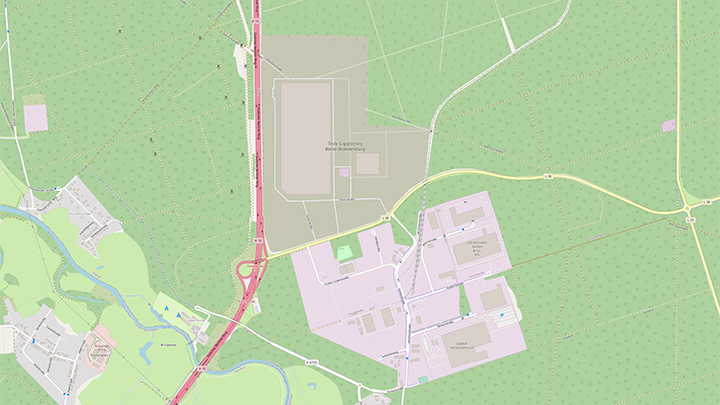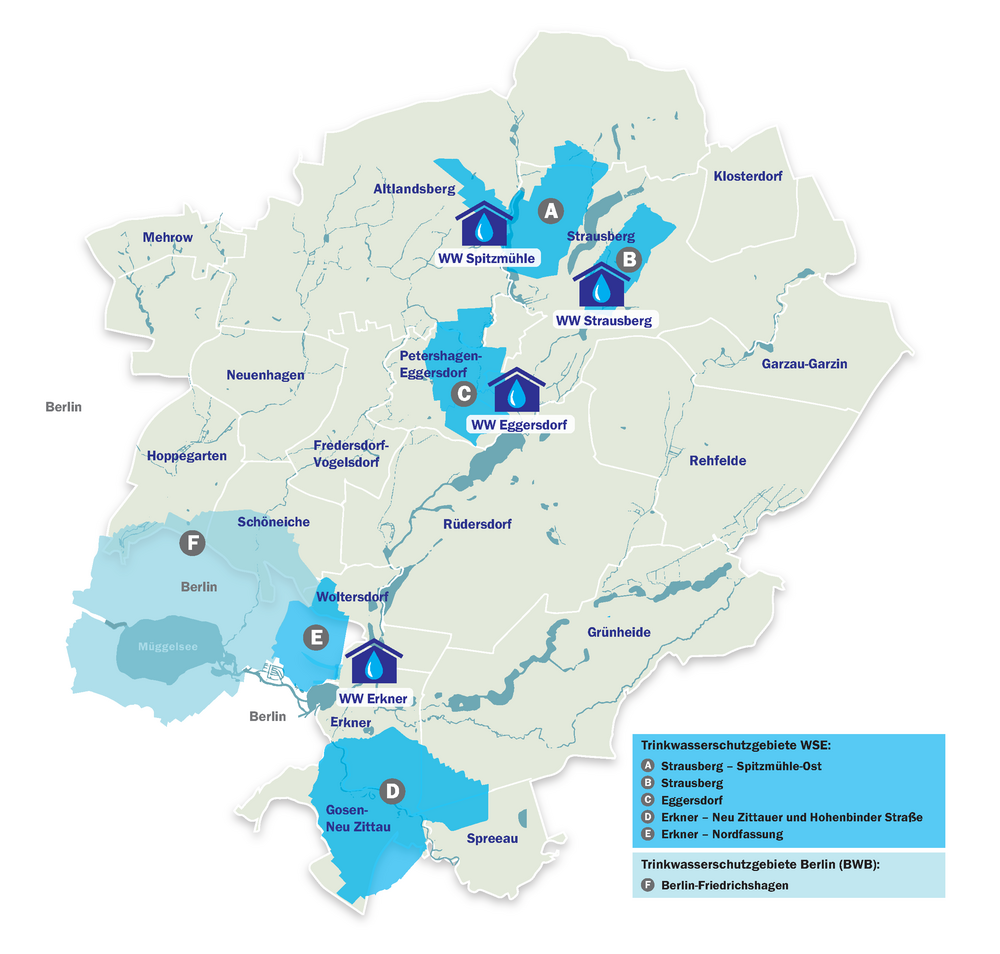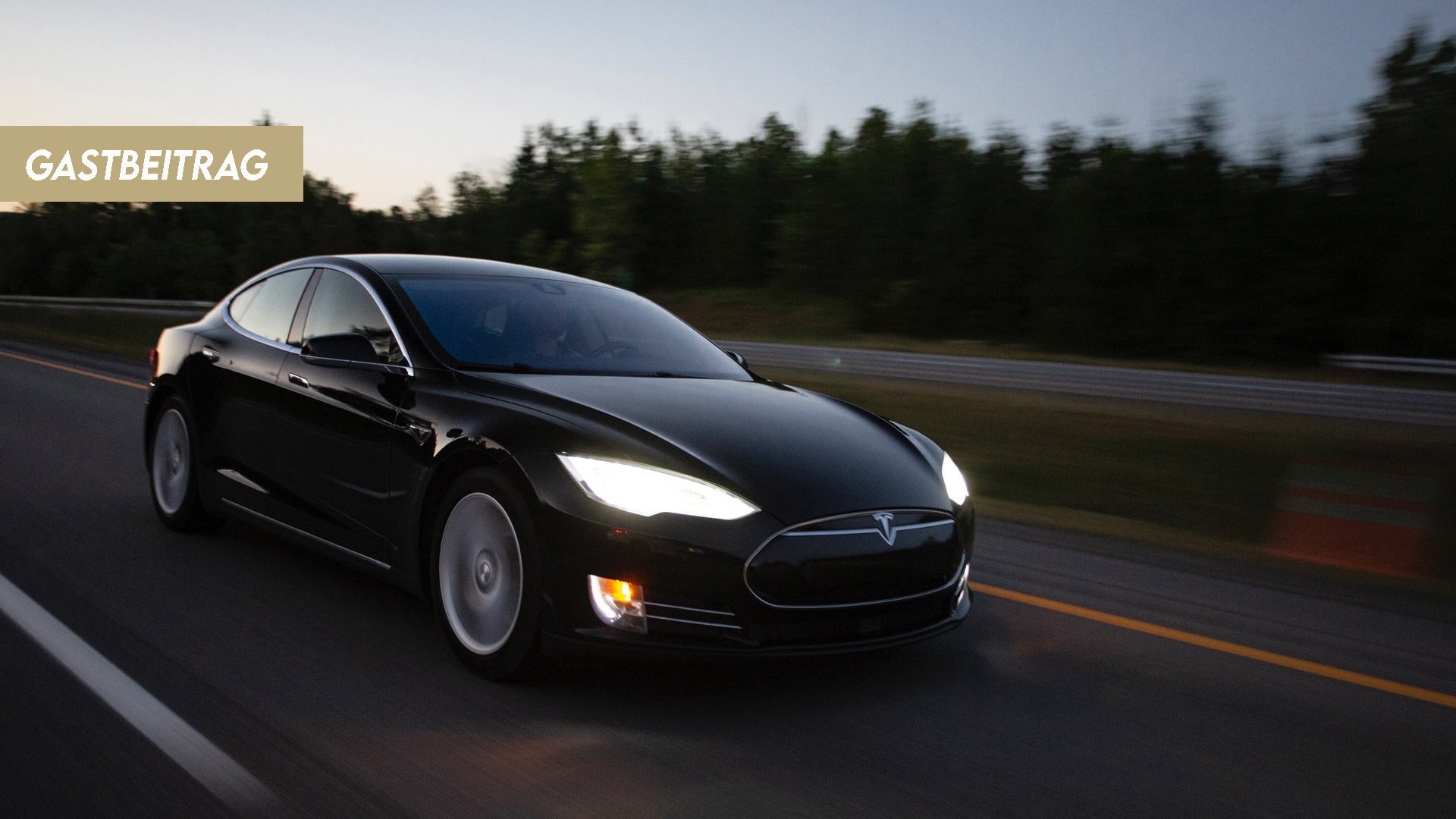As someone who is very well-read on both Tesla’s company history and the project in Grünheide, I reacted to the documentary with a long thread on Twitter, which I also posted below the video. Unexpectedly, the thread received massive attention and led to a variety of reactions. Next to loads of encouragement, something else happened that is very common on twitter: You receive direct messages with threats and hate speech, calling you a “Musk fanboy.” You end up being accused of being one-sided and much more. I had no choice but to delete the thread and its surrounding discussions for reasons of self-protection. Even blocking was no longer an option. Whoever accuses convinced “Tesla fans” of fanaticism has not yet experienced their opponents personally.
But let us start with the actual issue: What was the main problem? Was it people daring to criticize the sacred Elon Musk or the untouchable Tesla? No, that was certainly not the issue.
Emotionality always works
Musk and Tesla are no more sacred than the ZDF has a subscription to the truth. Unfortunately, however, this documentary left exactly that impression because it drew a thoroughly negative picture. I’m not criticizing that real, existing problems were addressed, but that reasons for and against, as well as differentiated considerations went by the board. Naturally, an emotionalization of the topic was not to be missed.
For example, the team interviewed an ex-Tesla engineer, who was significantly involved in the design of the battery pack in the early days of the Model S program and was highly respected for it. Later, she left the company under somewhat unfortunate circumstances. Since then, she and Tesla have been at loggerheads in what is known as an “arbitration case”. The two sides are making serious accusations against each other. Public disclosure of the case is currently being disputed in court.1
Therefore, it is impossible to pass a final judgement, but one must ascertain: It is highly unprofessional to include still unsettled cases, in documentaries especially when they clearly paint a negative picture of one side. The documentary also neglected the differences between the American and the German legal system, making a comparison to the situation in Germany utterly absurd. In Germany, such enforced secrecy clauses are illegal for good reasons. Unfortunately, they are a quasi-standard in the U.S. and are drafted into the relevant contracts by almost all corporate lawyers.
This can, and should be criticized. That applies to Tesla as well. However, such an objective perspective was missing. Tesla was much rather presented as the bad side in any case.
Apart from that, there were various factual issues to be discussed on a local level. One part is the forest clearance, the other crucial issue is the water supply.
Not all forests are equal
When it comes to the forest that Tesla needed to clear, the situation is very straightforward: it was a pine plantation of little ecological value that had been planted in GDR times and was ready to be harvested. This is not even up for dispute by Germany’s green party2. The forest’s biodiversity was low, the soil over acidified due to the pervasive monoculture. Nevertheless, Tesla agreed to reforest triple the area with higher-quality mixed forest to compensate for the clearing. The state has designated appropriate areas where Tesla will execute its promise3. Regarding the issue of the cleared forest, the Gigafactory should be seen as having a positive impact in the long-term.
Besides, the forests dispensability was established far in advance. Next to the construction site is a similarly large area with tank farms, gas stations and distribution centers – as you can see on the map below. Interestingly, there were no large-scale protests against the construction of said area. So apparently, the name Tesla itself has, attracted attention and lead to the application of double standards. Furthermore, the specific area had already been determined to be suitable for a car factory – it was in fact the alternative location for a BMW factory, which was eventually built in Leipzig.
All regulatory standards were met in the clearing process of the forest. Anthills and other relevant “nest structures” were relocated by experts, individual trees with nests or bats were even left long enough for the animals to relocate on their own. Just because everything was rapidly completed by German standards, it was not a scandal, and it was not done without permission, as some people claimed. What the documentary also left out: If the permit had not been granted so quickly, the clearance would have slipped into the breeding season, and that would have meant at least a three-month delay.

© OpenStreetMap contributors, licensed under Open Database License (ODbL) 1.0, License: https://opendatacommons.org/licenses/odbl/
Watergate – except it is not
The second major issue is the water supply and the pile foundation of certain parts of the building. The original plans required the foundation of around 15,000 piles. However, the location in a water protection area meant that this was not authorized due to the concerns of various groups. After arguments as well as technical necessities had beenexchanged, the final compromise was an agreed change of plans, which only included a foundation of only approx. 500 piles where the body presses will be located4. Otherwise, a protection against sinkage could not be ensured since the mechanical forces could not be diverted adequately. So, 14,500 pile foundations were cut and replaced with other, less invasive techniques. This was also accompanied by a major cost saving for Tesla, so one can easily speak of a win-win situation.
The second aspect is water consumption. Here is a description of the situation:
1) It is often inaccurately stated that the factory is located directly on a protected drinking water area. This is not correct, as can be seen from the overview map of the local water association (WSE):

The real point of contention relates to the security of the drinking water supply.
2) It is often insinuated that the water supply for the factory is not secured. This is not true for the first construction phase of the factory, which is the issue of contention. There is a contract guaranteeing the supply of up to 1.45 million cubic meters of water per year, regulating the connection of the area, and excludinga shifting of the costs to the citizens.
One would not be wrong to state that this agreement was preceded by tough negotiations and that the initial estimate of approximately 3.3 million cubic meters had to be rejected by the WSE and surrounding state associations. This does not mean that these cannot be provided in the future – but it could require the construction of additional infrastructure.
3) The controversy about the region’s water resources is often reduced to the Tesla factory by the media. However, this misrepresents the situation and hides the fact that the WSE itself has been involved in disputes regarding water withdrawals for some time, with a plethora of other factorsplaying a role in the region. This article from 2015 shows that the dispute about water supply and contamination in Brandenburg is much older and supra-regional. Of course, one can consider the question of whether the factory should be built at all under these circumstances. Regarding that argument I would like to point out that it will probably not be possible to find a single location where there are no environmental challenges to be solved.
4) Tesla does not ignore these challenges either. Extensive water recycling measures have been planned to reduce their primary consumption and to avoid overburdening the connected wastewater treatment works. For example, the paint shop will rely on state-of-the-art equipment from Geico Taiki-Sha5, significantly reducing the amount of fresh water used and also decreasing the amount of material used. The new battery factory will use the Dry Electrode process developed by Tesla and Maxwell, which largely eliminates the wet chemical process, reducing the water consumption to a level far below current battery factories. It also significantly reduces the amount of toxic chemicals involved in the battery production process.
5) One should also keep in mind that Tesla has no interest in a water supply problem either. Such a problem would endanger the company’s existence, damage its business and therefore be downright stupid. In addition, it should be considered that Gigafactory 1 in Nevada is located in the middle of a desert. People there have become creative and, in some cases, use so-called “treated urban wastewater” instead of fresh water. In other words, they use moderately treated wastewater that is good enough for various factory processes before it is finally sent to the wastewater treatment works for drinking water treatment. The WSE alone is responsible for 170,000 people – perhaps something can be done about this in the future.
As it turns out, the water problem is real. But for the construction phase mentioned in the documentary, the problem has been solved. If the documentary begins by stating “There is one resource that Tesla needs from Germany: Water”, then the framing is already set: The evil Yankee billionaire comes to Germany stealing water from the poor little East Germans in Brandenburg.
One could ask the follow-up question here: What factory does not need water to function? Whether it is canned soup, toilet paper, or textile processing, water is an elementary part of industrial production processes, and when industrial parks are designated, a certain supply must be guaranteed. And here again, when was the last time Germany got this excited about a factory building of this size being built? I cannot remember. So here again: If it’s labelled with “Tesla”, it turns into a scandal.
It also turned out that an Elon Musk tweet about the factory was manipulated with an entire phrase being edited out of the documentary. The rest of the tweet obviously did not fit the intended narrative.
But I do not want to respond to polemics with polemics: Yes, it is right to take a critical look at the construction project, especially regarding the subject of water, not least because good changes have actually been achieved as a result. But the analysis should be constructive and not destructive. I think the ZDF and its show “frontal21” have lowered themselves to the level of the local right-wing populists in terms of their reasoning. There is no necessity for that.
The mills of bureaucracy grind slowly
Whether it was about the forest, the water issue, or other approval-related things: We all knew that the pairing of Tesla and German bureaucracy would tell an interesting story.
A few critical words to start with: Elon Musk is a visionary, entrepreneur, and engineer who, as technically brilliant as he may often be, also brings a good dose of uncompromising determination to his manner.
His companies pursue well-defined goals, but often with a “love me or leave me”, “do or die”, and “whatever it takes mentality”. Anyone wanting to launch a space program for Mars and co-founding the first carmaker in America in more than 100 years to make it to mass production without going bankrupt is also prepared to accept that you have to break an egg to make an omelet. Elon Musk – the individual – can fill books in all his facets and has already done so to some extent.
A documentary can certainly address this, with all its dark sides, but it should keep it in perspective. You do not achieve this insane speed of growth and technical advancements with people who see their job as “nine-to-five” occupational therapy. The way Tesla rebuilt its factory in Fremont countless times at top speed, built production lines in tents and even let one or two cars with overly large panel gaps slip out of the factory is probably a bit too much of a good thing for our German tastes. As a Tesla customer, I know what I am talking about. For better and worse.
On the other side you have the German bureaucracy, which had to face a clear statement from Tesla: Our capacities are at it’s limit, we need this European factory. Not in 2025, but in 18 months.
There should be no misunderstandings: This was part of the deal. And that is perfectly understandable, considering that a private-sector company cannot afford to make excursions like the public sector did when it built the BER airport. So, when the ZDF says that “the relentless pace is pushing politicians and authorities to the limits” that should seriously make us Germans think. Especially, since we are experiencing something similar with Covid-19 at the very moment.
Just to remind ourselves once again: Politics and the authorities provide the private sector with a regulatory framework within which it should be able to operate as efficiently as possible. Politicians, especially the likes of Jörg Steinbach, the SPD’s Minister of Economics in Brandenburg, can hardly be blamed here. He has repeatedly done a great job of mediating between the fronts and has never acted as a hindrance. But when state officials can be seen almost complaining about having to “do some real work”. Well, then the pity they deserve is very limited.
With the help of an interim permit and a security deposit of many millions of euros, a practicable solution has been found to combine construction progress and legal formalities. The fact that it takes more than a year to issue a final permit may be questioned anyway.
A call for compromise
I think we should see the establishment of Tesla in Germany as an opportunity and combine the best of both worlds.
We can learn something from the pragmatism, the speed and the light-footedness of how this “alien dreadnought” of a corporation is still developing and constantly changing. As someone who has worked in extremely large companies myself, it often fills me, as an engineer, with awe how quickly this company can make changes.
We Germans, however, also have something to offer Tesla in terms of learning, something Musk himself has often cited: He appreciates German engineering and the structured nature of our approach. I think that’s a compliment. And judging by Tesla’s past, it certainly would not have been bad to sometimes think twice and just do it once, instead of doing it twice without thinking at all.
Furthermore, the fact that people are not to be considered wearing parts of any mechanism could be a valuable lesson, even if I explicitly do not want to agree with all the accusations levied at Tesla. However, statistically it is highly likely that there have been cases in which Tesla has not covered itself with glory. But that is what a constitutional state and law system are for. And they know no exceptions.
Let’s be happy with the majority of the locals, whose region is gaining a new, urgently needed perspective, and for Germany as a business location, whose technological position is being strengthened and upgraded not only by Tesla itself, but also by the many suppliers involved. I myself was lucky enough to be on location in Grünheide once and I mainly met friendly people who were open-minded towards the project.
In the end, I can only advise everyone to lower the debate’s temperature a bit and try to be objective. The issue at the heart of the discussion remains a car factory building, even if it is called “Tesla Gigafactory Berlin”. Unfortunately, Frontal21 has definitely failed to do so. I too will not have managed a neutral portrayal here. Nevertheless, I hope to have shone some light on the different positions involved.
Let us put that newly gained insight to good use.
The article reflects the opinion of our guest author.
Editor’s Note: The Frontal21 documentary “Turbo, Tempo, Tesla” is available in the ZDF media library: https://www.zdf.de/politik/frontal-21/dokumentation-turbo-tempo-tesla-elon-musk-in-brandenburg-english-100.html.
- https://casetext.com/case/balan-v-tesla-motors-inc-2.[↩]
- https://www.n-tv.de/politik/Nicht-einmal-Gruene-wollen-Tesla-Wald-retten-article21585616.html.[↩]
- https://www.rbb24.de/studiofrankfurt/wirtschaft/tesla/2020/tesla-wald-kiefern-landeswaldgesetz-gruenheide-umwelt.html[↩]
- https://www.moz.de/nachrichten/brandenburg/gigafactory-tesla-will-seine-fabrik-in-gruenheide-mit-weniger-pfaehlen-bauen-50881067.html[↩]
- https://www.torquenews.com/11826/equipment-elon-musk-s-revolutionary-gigaberlin-paintshop-beings-installation.[↩]
- Quelle: https://twitter.com/alex_avoigt/status/1372907415604199424?s=20.[↩]
- Quelle: https://twitter.com/elonmusk/status/1220938613862436865?s=20.[↩]



